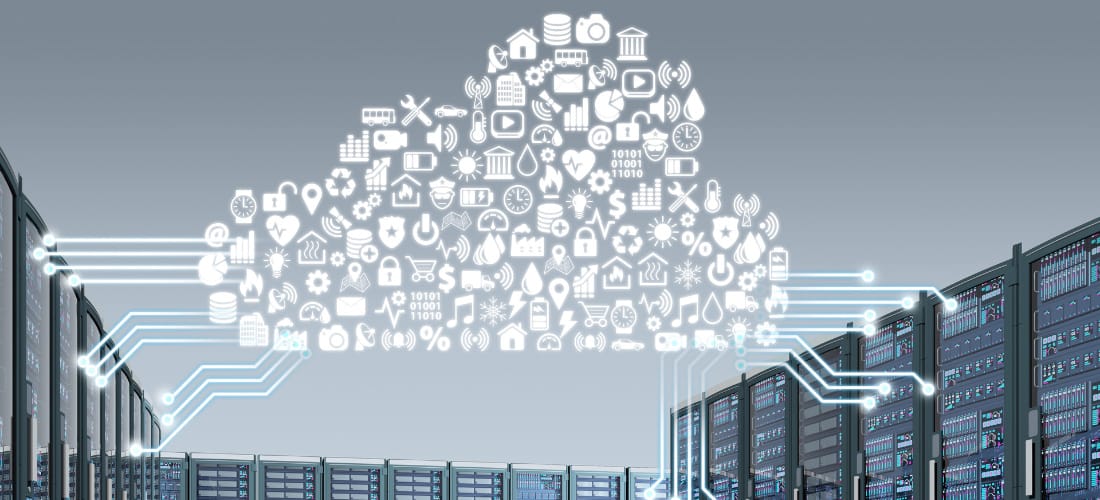
31 Jul Mainframe Computers and Modern Cloud Computing: A Legacy Guide
Mainframe computers played a significant role in shaping the fundamentals of modern cloud computing. Key principles of scalability, multi-tenancy, reliability, security, and cost-effectiveness were inherent to mainframe systems. Now they are integral to cloud services. While we have made the transformation from physical mainframes to cloud infrastructure, it is important to emphasize their interconnected historical and functional relevance.
 What is a Mainframe Computer?
What is a Mainframe Computer?
A mainframe computer is a high-performance computing system, synonymous with significant processing power, vast storage capacity, and advanced reliability features.
These computers were true behemoths and typically larger than conventional server units. Mainframes held a vise-like grip on the tech industry from the 1950s through to the early 1980s.
They served as the backbone of computing for major organizations such as banks, government institutions, and corporations.
In their prime, mainframe computers were the epitome of advanced computing technology. They were able to handle and process large amounts of data, allowing for concurrent usage by hundreds or even thousands of users.
These features were particularly invaluable to big businesses where data processing requirements were immense and continuous.
 Is the Mainframe Computer Still Relevant Today?
Is the Mainframe Computer Still Relevant Today?
When you look at the computing power of the phone in your hand or back pocket, you might think mainframes have gone the way of the dodo bird.
Contrary to expectations, advancements in technology have not rendered mainframe computers obsolete.
Despite the prevalence of more compact and accessible computing devices, mainframe computers still form an indispensable part of the IT infrastructure in numerous large-scale organizations.
The enduring relevance of the mainframe computer can be attributed to three key features:
- remarkable durability
- superior performance
- top-tier security posture
These qualities remain critical when managing large databases and transaction processing systems.
 The Mainframe’s Relevance in Modern Cloud Computing
The Mainframe’s Relevance in Modern Cloud Computing
Mainframe computers laid the foundation for many of the principles that are fundamental in cloud computing:
Scalability
Mainframes were renowned for their scalable nature, efficiently accommodating increased workloads without disruption. In cloud computing, cloud architecture is designed to offer on-demand resource allocation and scaling based on the user’s requirements.
This scalability provides businesses with flexibility, allowing them to adjust their processing power in real-time, depending on the volume of data they need to handle.
Sharing Resources Efficiently
Mainframe computers could handle requests from multiple users concurrently, a concept that is fundamental to modern cloud environments.
In a cloud setting, multiple tenants share computing resources while still operating independently – a nod to the multi-user capacity of its mainframe predecessors.
This multi-tenancy not only ensures efficient resource use but also provides a cost-effective solution for businesses, typically reducing their operational expenses and improving the efficient use of IT budgets.
Reliability and Uptime
Mainframes have always been associated with reliability and high uptime.
“Always Available, Always On” is a fundamental expectation from end users in today’s cloud computing environment.
Many cloud service providers commit to providing uptime of 99.9% or better, ensuring their customers’ business continuity and productivity.
This philosophy, pioneered by mainframes, is now a standard offering from the best cloud hosting providers.
Safeguarding Critical Data
Security was a robust feature embedded into the design of mainframe computers.
The need for secure data handling and storage has been inherited by cloud computing, with cloud providers continually investing in advanced security measures to protect user data. Using an array of security tools and protocols, cloud computing aims to provide a secure environment for data.
In this way, cloud environments are aligning with the stringent security norms established by mainframe computers.
Cost-Effectiveness
When it came to cost-effectiveness in terms of computing power per dollar, mainframes were pioneers.
This principle has been adopted and improved upon by many cloud providers.
Some offer flexible pay-as-you-go pricing models, allowing organizations to pay for only what they use, minimizing wasted dollars, and maximizing return on investment.
Of course, you should always make sure you understand your service level agreement, so you know your organization is getting what you’ve paid for from your provider. At Cyberlink, our goal is to have a plain language agreement with our partners.
In Conclusion
While the physical prevalence of mainframe computers has reduced, their legacy continues in the principles and practices of modern cloud computing.
The transformation has been more of form than function — from the tangible, room-filling mainframes to the intangible, yet omnipresent cloud.
A deeper appreciation of the cloud and its functionalities comes from understanding the origins and mechanics of mainframe computers.
The innovations and developments that marked the era of mainframes were instrumental in shaping the cloud computing revolution and the benefits it conveys to businesses.
 Need Help Making Your Network More Robust, Increasing Business Productivity, Or Capping Escalating Technology Costs?
Need Help Making Your Network More Robust, Increasing Business Productivity, Or Capping Escalating Technology Costs?
Our trained team of cloud computing experts can help you by developing the most secure and efficient cloud based storage and processing solutions for your business.
Let us demonstrate exactly what Cyberlink can do for you – using your own data and workflows.
 What is a Mainframe Computer?
What is a Mainframe Computer? Is the Mainframe Computer Still Relevant Today?
Is the Mainframe Computer Still Relevant Today? The Mainframe’s Relevance in Modern Cloud Computing
The Mainframe’s Relevance in Modern Cloud Computing Need Help Making Your Network More Robust, Increasing Business Productivity, Or Capping Escalating Technology Costs?
Need Help Making Your Network More Robust, Increasing Business Productivity, Or Capping Escalating Technology Costs?